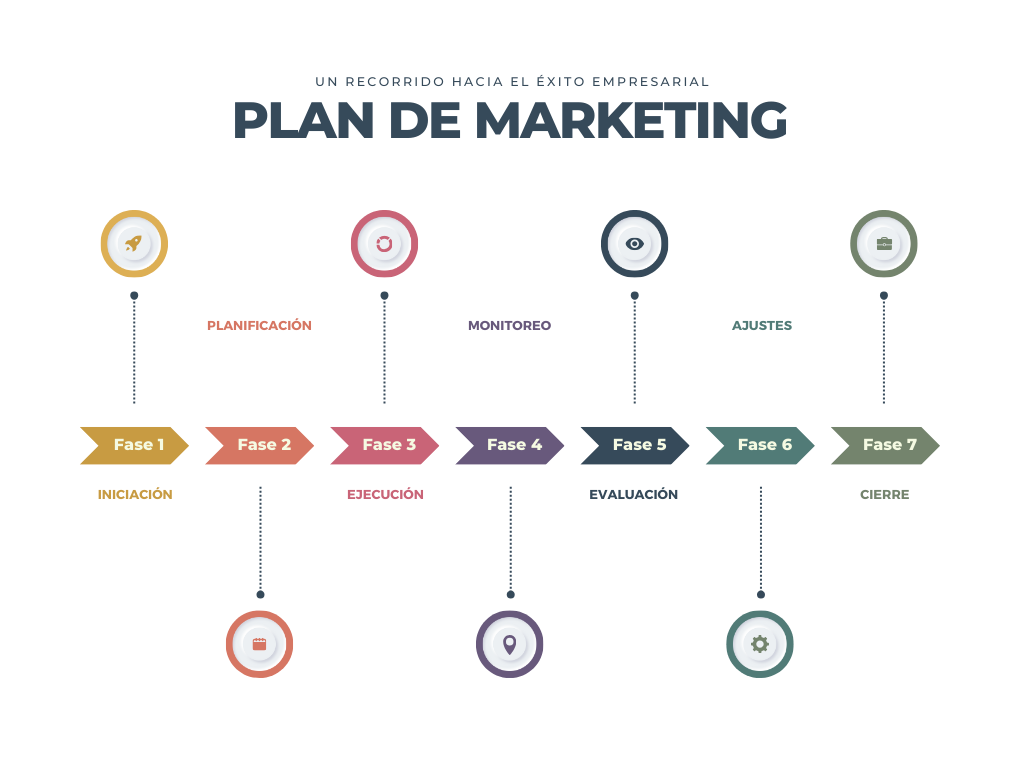A guide for PR and Marketing professionals
Discover how to develop an effective Communication Plan that not only meets your managers’ expectations, but exceeds them. This step-by-step guide is designed especially for public relations and marketing professionals who need to structure a solid, strategic plan.
Any good communication plan should include several key components to ensure its effectiveness. It should begin with an Introduction that captures the brief of the project and the organization requesting it. Then, clearly define the Objectives, identify the Target Audiences – and even the ‘buyer-personas’ if anyone has had time to think of them, and perform a thorough Market Analysis. The analysis can take into account what is known about the industry, the brand or the competitors of the person in charge of the communication plan. Next. the plan must articulate a clear Strategy and detail an Action Plan over time, which will be implemented by an appropriate Team of professionals. No plan is realistic if it does not include the necessary budget to implement it. Everything ready? Let’s get started!
Welcome to the Impact Strategy!
If you’ve been tasked with developing a communication plan and you’re feeling lost, you’re in the right place. Incognito’s detailed guide is designed to help you create a plan that really makes a difference. Here we will explain the different sections that your communication plan should contain.
Market Analysis
Conduct in-depth analysis to understand current narratives, competitor strategies, and consumer behavior. This knowledge is vital to design a plan that responds effectively to market dynamics.
SWOT Analysis
A SWOT analysis is a strategic tool used to identify and understand the Strengths, Weaknesses, Opportunities and Threats (SWOT) related to a project or business. It is crucial for strategic planning because it allows organizations to capitalize on their strengths, improve their weaknesses, take advantage of market opportunities and mitigate or prepare for potential threats.
- Weaknesses: These are internal factors that place the project or business at a disadvantage with respect to its competitors.
- Threats: External factors that could cause problems for the project or company.
- Strengths: These are the internal and positive attributes that differentiate the project or company from the competition.
- Opportunities: These are external elements that the project or company can exploit to its advantage.
Although its importance is often minimized, a successful SWOT analysis can increase your influence over the person or persons who validate your Communication Plan. Watch out for this. If you are strategic you will be treated (and paid) like a strategist.
Goals
Define specific, measurable and achievable objectives for your communication strategy. These objectives should be clearly aligned with broader business goals.
Remember that the direct objectives of a Communication Plan must be measurable, so do not accept to be attributed objectives that are not communication objectives (such as sales in a quarter, or leads entering the web) or that you do not fully control. If you can’t influence the price of a product or its marketing channel, don’t accept that the primary objective of communication is to “increase sales”. Good communication contributes to improving corporate objectives, but what you can control are the media impacts. Or even the climate of opinion about a brand or a company.
Strategy
Develop a comprehensive strategy that includes media relations, digital communication and interaction with the different stakeholders of a company. Plan how each element will contribute to achieving the proposed objectives.
In any case, remember: “Strategy is a commodity and execution is an art”. Most communication plans require a simple and easy to understand strategy. The hard part is executing and implementing that strategy.
Action Plan
Sometimes we forget, but any communication plan must contain an execution time. So it seems inevitable that we organize the proposed activities in a concrete action plan, detailing each step, from the drafting of press releases to the execution of campaigns on Social Media. This is called a Scope Of Work, or SOW. Basically, it is the description of each of the services or tasks that we will undertake as communication managers, with the aim of implementing our communication plan.
Creative Ideas
There is no worthy communication plan that does not contain a couple or three creative ideas that go beyond the conventional. Often, they are ideas that demonstrate the creativity and imaginative capacity of the communication team.
Although in many cases these ideas do not end up being carried out, it is important that you propose innovative ideas to differentiate the brand or the project you are working on. Often, the task of communication and public relations departments is to create a memorable impact. (One impact or many!). Think of the most recent Digital Out Of Home (DOOH) promotional campaigns or the more conventional large billboards, which have revitalized advertisers such as FC Barcelona presidential candidate Joan Laporta or Netflix series. In all cases, the goal was to make a difference, to capture the public’s attention (and eventually, to move the opinionated needle in the right direction).
Timeline Include a timeline that clearly illustrates the project phases and associated deadlines. This ensures that all involved have a clear reference of timing and expectations. Depending on the format in which you present your communication plan, you can use different tools: Excel, Trello or a simple Word document. If the person who must validate your plan is short on time, a visual format, such as a diagram or timeline, may be appropriate.

The communication team
If you are fortunate enough to have several colleagues on your team-either in the department or by enlisting the services of a communications and marketing agency-clearly define roles and responsibilities within your PR team to ensure that all members contribute effectively to the success of the plan. It is important to clearly detail who will perform what function.
And if you are alone with the task of implementing a communication plan, it is also important that you define to your decision-makers what you can do yourself and what you need to outsource to an agency or another department within the company, such as Design, Marketing, Sales, Human Resources or even Events.
Budget
Prepare a detailed budget that includes all the resources needed to carry out the plan. Being precise in this aspect is crucial to avoid cost overruns and optimize resources. And remember that the budget can be detailed in currency or in time, if you do not have external resources and must rely on your own company’s professionals.
Finalize the communication plan with a clear vision of the impact we hope to achieve and the steps to follow once the plan is approved. This summary should motivate and align all participants towards common objectives.
Activate your communication plan!
Don’t wait any longer to transform your communication strategy. Visit our communication services page and find out how we can help you achieve your goals.












